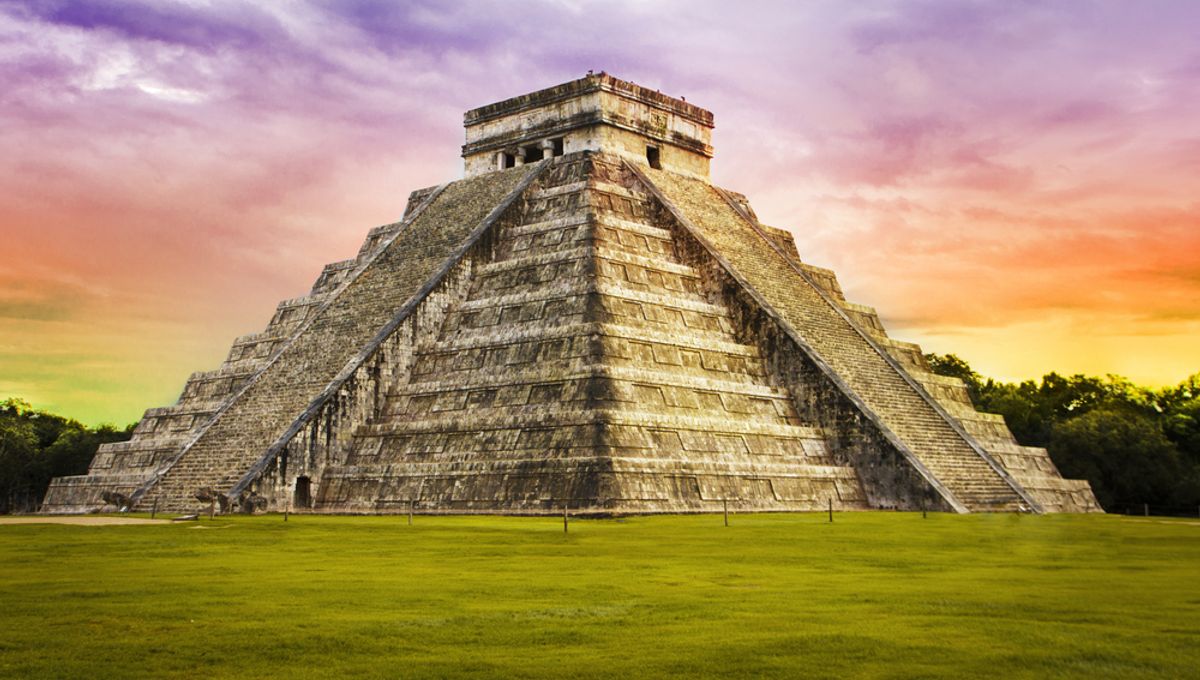
Remember 2012? That was the year that Lonesome George died, NASA’s Curiosity rover landed on Mars, and Felix Baumgartner skydived from the edge of space. It was also the year of the biggest anti-climax in history as the world failed to end on December 21 – the date that, according to some, the Maya had foreseen the apocalypse.
In truth, the ancient Mesoamerican civilization made no such prediction, and archaeological findings suggest that the Maya actually expected the world to continue to exist indefinitely. Their calendar, though, did come to the end of a major cycle in late 2012, leading to New Age misinterpretations about the end of days.
The End Of The Mayan Calendar?
The Maya were expert timekeepers and, like us, divided the passage of time into recurring periods. Rather than counting in neat centuries and millennia, though, the Mayan calendar consisted of two interlocking systems known as the Haab – which consisted of 365 days – and the 260-day Tzolkin.
Making modern imperial units of measurement seem positively straightforward, the Mayan calendar tracked both of these timetables simultaneously until they finally aligned every 52 years. Scheduling events further ahead than this was therefore not possible, which is why the Maya also devised the so-called Long Count calendar.
Each Long Count consisted of 5,126 years and was split into 13 equal segments of roughly 394 years, known as Bak’tuns. The Maya began counting the previous Long Count on August 11, 3114 BCE, which means the 13th Bak’tun of that cycle was due to end on December 21, 2012.
As with our own timekeeping systems, the end of Long Count was immediately followed by the start of the next, and there is no indication in the archaeological record that the Maya expected time to grind to a halt when any given cycle came to a close. However, in 1987, author Jose Arguelles published a book in which he wrongly interpreted the Mayan calendar as a countdown to the end of time, sparking a worldwide fascination with the Mayan apocalypse theory.
As the date approached, people in Russia became so worried about the forthcoming global extinction that the Minister of Emergency Situations had to issue a statement telling everyone to chill out. Meanwhile, authorities in the French village of Bugarach stepped in to stop crowds gathering on a mountain where some said an alien spacecraft would come to rescue them.
Yet while all of this nonsense was clearly rooted in a basic misunderstanding of the Mayan calendar, apocalyptophiles were given a shred of actual hope by the discovery of an ancient monument in southern Mexico.
The Tortuguero Prophecy
Dated to the seventh century CE, Tortuguero was a shrine or tomb dedicated to a local ruler called B’ahlam Ajaw in the southern Mexican state of Tabasco. Excavations at the site revealed an inscription – known as Tortuguero Monument 6 – which contains a cryptic reference to Bak’tun 13.
The only significant reference to the end of the Long Count ever found, the text has never been fully interpreted, partly because some of the glyphs have faded. However, the remaining figures mention the return of Bolon Yokte, a Mayan god associated with war and creation.
In 1996, archaeologists David Stuart and Stephen Houston published a rough interpretation of the text, which they labeled ‘The Tortuguero Prophecy’. Though the pair never said the inscription predicted the end of the world, their work was unsurprisingly seized upon by peddlers of the Mayan apocalypse idea, fuelling the hysteria surrounding the 2012 finale.
When re-analyzing Tortuguero Monument 6 a few years later, both Stuart and Houston concluded that the inscription probably wasn’t referring to any event succeeding the end of the Long Count after all, but was simply documenting the dedication of the shrine on January 11, 669. The scribe, they say, identified the date by counting backward from the 13th Bak’tun.
The monument, therefore, does not describe the end of the world, but simply references the conclusion of the Long Cycle as a means of keeping track of time.
So What Did The Maya Believe?
The Maya fully expected a new Bak’tun to begin when the previous one came to an end. No judgement day, no planetary implosion, and certainly no alien rescuers are referenced in any of their surviving artifacts – and they had no doubt that the sun would rise as normal on December 22, 2012.
Luckily, researchers found definitive proof for the continuation of life as we know it just in time to put people’s minds at rest. In May 2012, archaeologists in Xultun, Guatemala, unearthed the oldest and most complete Mayan astronomical tables ever discovered. These calendars stretched at least 7,000 years into the future, indicating that the Maya didn’t simply stop counting at 2012.
Like all other Mayan timekeeping systems, the newly discovered calendars are likely to represent cycles that repeat ad infinitum. In other words, the ancient civilization that is most synonymous with apocalyptic predictions actually thought the world would never end.
Source Link: How The Maya Imagined The World Would End (Or Not)